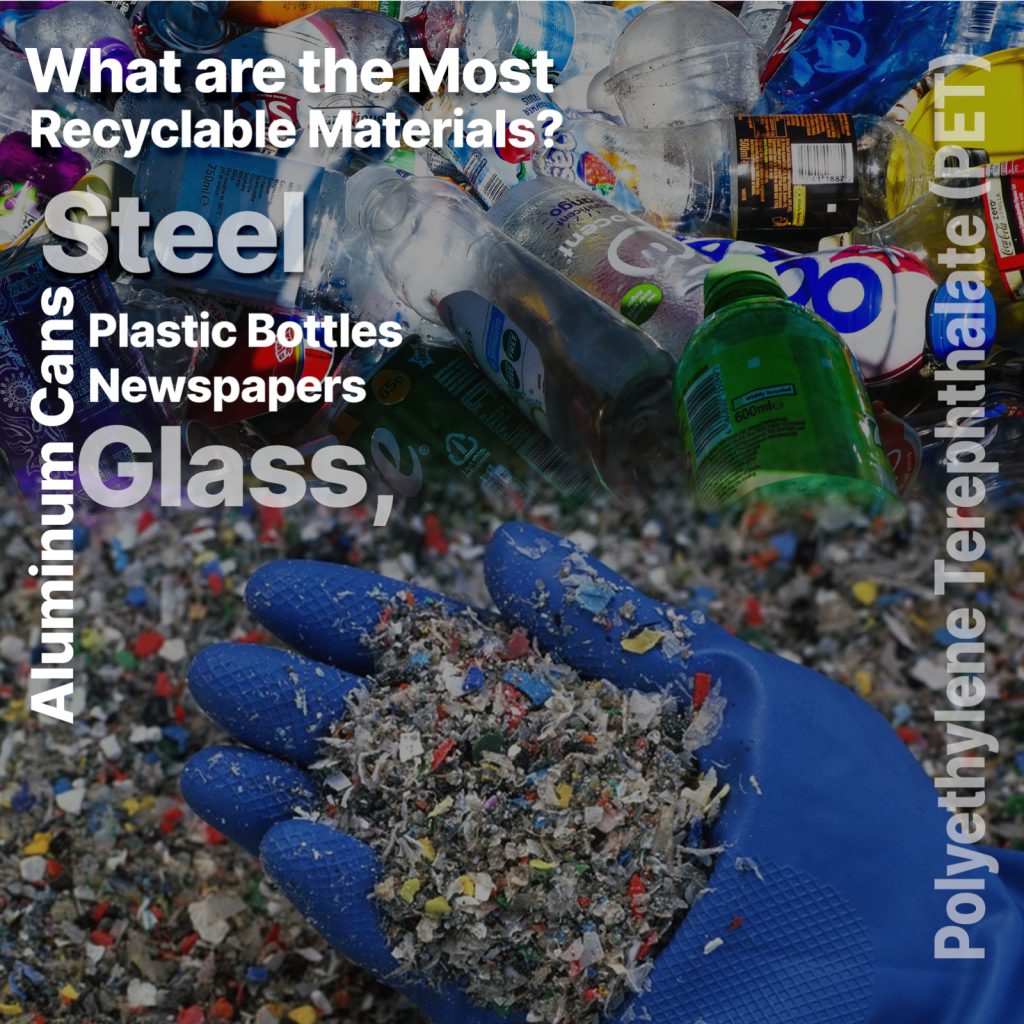
What are the Most Recyclable Materials?
Recycling is the process of gathering and using resources that would otherwise be thrown away as waste to make new products. The ability of a material to regain the properties it had in its original state determines its recyclability. It is an alternative to “traditional” waste disposal that can help save material and reduce greenhouse gas emissions.
Steel
The most recyclable material on the globe is steel. Recycled steel only accounts for about 40% of the total amount of steel produced, even though more steel is created than is destroyed, resulting in a 60% recycling rate. Each year, 1085 million tons of steel are recycled. Recycling steel scrap from automobiles, appliances, and building supplies involves remelting the metal in an electric arc furnace or a simple oxygen furnace. “Steel can continually be recycled because of the chemical composition of its core properties and strength,” explains Steven Torres, CEO of Metal Carports. Thus making steel by weight, the most recycled material.
Aluminum Cans
Aluminum cans are among the most recyclable materials because they are 100% recyclable and can be reprocessed multiple times. Recycling aluminum uses only about 5% of the energy required for smelting, making it the material with the highest recycling energy savings of any major material. The energy saved by recycling a single aluminum can is equivalent to running a television for three hours. Recycling aluminum uses 95 percent less energy than producing it from raw material. Other aluminum-containing materials that can be recycled can include baking tins, curtain rods, foil, spray cans, and aluminum siding.
Polyethylene Terephthalate (PET) Plastic Bottles
Plastic bottles made of polyethylene terephthalate (PET) are another recyclable material. The bottles in this category include one- and two-liter clear soda bottles, as well as containers for water, alcohol, liquid cleansers, detergents, and antacids. PET is the most widely recycled plastic in the world, with 1.5 billion pounds of discarded PET bottles being collected and recycled annually in the US. Recycling PET saves two-thirds of the energy usually required to produce new plastic, lowering greenhouse gas emissions and drastically reducing solid waste generation. Recycled PET materials can be made into new PET containers, carpets, clothes, protective packaging, and other products indefinitely. While PET is an inert material that is resistant to microorganism attack and poses little risk of groundwater contamination when deposited in a landfill, it is still a tremendously valuable material when reprocessed properly.
Newspapers
The amount of paper consumed around the world is roughly equal to the amount of paper produced annually. Paper, fortunately, is one of the most recycled materials. Paper and paperboard recycling in 2018 amounted to almost 46 million tons, with a 68.2 percent recycling rate, the highest of all MSW commodities. Clean post-consumer paper can be recycled five to seven times before it transforms into cellulose fibers. Paper breaks down into methane, a greenhouse gas with 21 times the ability to trap heat as carbon dioxide. One of the most important reasons for recycling newspapers is to preserve the environment.
Glass
Glass affects the ecosystem for both environmental and economic reasons. Jars and bottles made of recycled cullet (crushed glass) use far less energy than those made from virgin materials. One glass bottle recycled ended up saving enough energy to run a television for 12 hours. Glass doesn’t lose its quality no matter how many times it is recycled. As a result, it is possible to recycle the same jars and bottles more than once while upholding the same high production standards. Glass made from recycled glass cuts related environmental pollution by 20% and related water pollution by 50%. A metric ton of recycled glass goods reduces the emission of 315 kilos of CO2 into the atmosphere.
Conclusion
Recycling reduces the need for raw material extraction (mining, quarrying, and logging), refining, and processing, all of which cause significant air and water pollution. Recycling saves energy while also lowering greenhouse gas emissions, which aids in the fight against climate change. If you like this article you may also like; Benefits of Reverse Vending Machines in Supermarket

